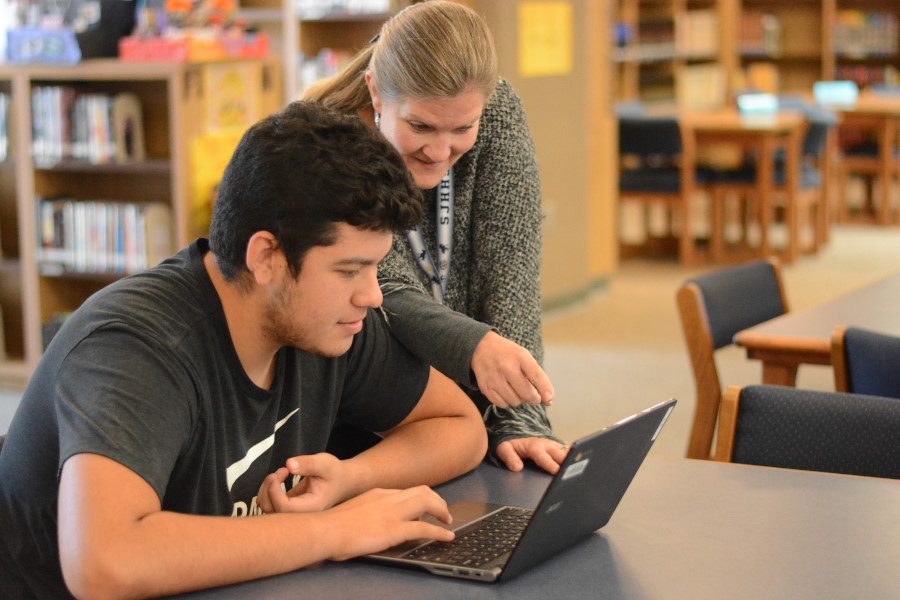Tutorial: What’s The Real Purpose?
Gabrielle Martinez studies in the quiet library. Tutorial classrooms can be louder, especially during student choice.
December 12, 2016
To some, tutorial is a time for studying, having 35 minutes of social life, or catching up on last minute homework assignments from the previous night. But what some teachers believe is the purpose of tutorial often conflicts with how the majority of students want to use it.
Inconsistent classroom policies about the use of tutorial time makes it difficult for students to know what to expect on a given day.
Some students want to use tutorial for productivity, or perhaps studying for the next big test to keep that A, or simply finishing homework so they have more free time for other plans or extracurricular activities after school.
In some cases, a student’s plan to study at the last minute to cram in information or finish homework for the next class does not always go as planned.
But teachers may divert from their ordinary tutorial routine to an unexpected activity such as changing seats or suddenly deciding to review or reteach a concept.
In other cases, such as in a student choice tutorial, the class may be too loud (unless the teacher enforces a quiet, studious environment).
Students without a zero period class will be likely to stampede to get to an open, and often popular, class. This almost always results in the classroom being too loud to focus on academics.
Janey Gidion, an AVID and English teacher, said, “Tutorial allows teachers and students extra time to get work done, to reteach the lessons or the skills that students haven’t mastered yet, [allowing] them to make up assignments like quizzes if they have to, [and] allow for writing conferences.”
Freshman Sean Sedique adds, “Many teachers, as I have observed, like to extend their lesson plan because the tutorial period gives them more time to catch up with whatever they’re [falling] behind in or to help expand whatever they’re teaching.”
Although students are more than welcome to ask questions, it is debatable as to whether or not teachers should use tutorial time for expanding on lessons.
According to Principal Jennifer Smalley, tutorial is meant to allow for homework time, reteaching concepts, test makeups, and to give teachers a little extra time in addition to their actual class to get things done.
When asked if teachers should teach new concepts, Principal Smalley said, “It’s not supposed to be new information. It’s supposed to be time to go back and review stuff that people need to have reviewed.”
In the end, both students and teachers seem to agree that tutorial is meant for catching up on work and studying. Even with all its flaws and inconsistencies, having it is better than not having it.



Laura • Nov 18, 2016 at 7:13 PM
Awesome article!